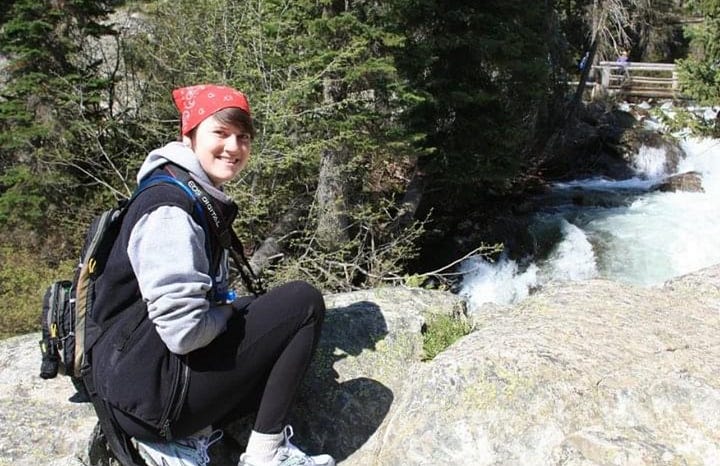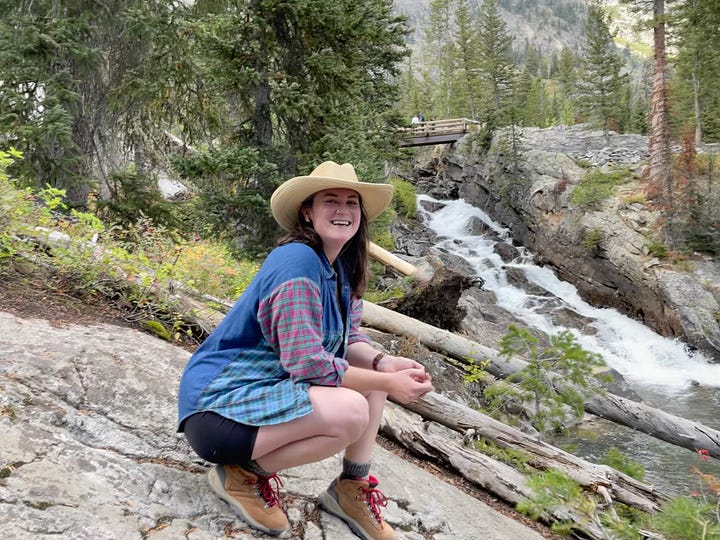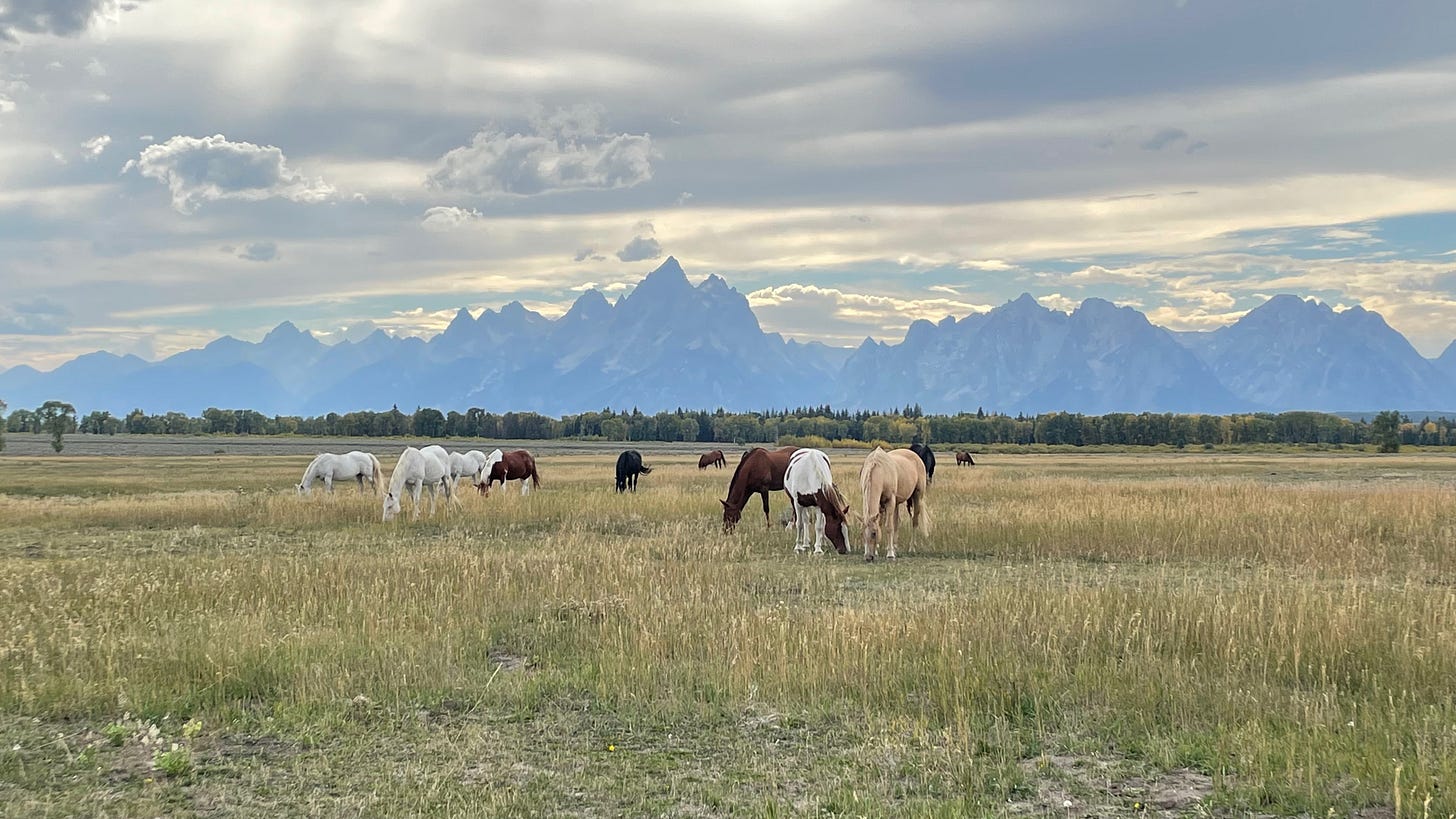Teton Pass, Wyoming
A mudslide wiped out a major portion of the road near Grand Teton National Park over the weekend. How two lanes of mountainous highway threaten an already overwhelmed and under-housed tourist industry
Long before I lived in my van or had a broader understanding of national parks, I fell in love with the Grand Tetons. My family went when I was a teenager old enough to be allowed alone time in the park, and the genesis of my solo hiking intrigue. I remember standing in complete awe (a difficult achievement for a smug 18-year-old) of the sheer prominence of the jagged granite peaks, unlike anything I’d appreciated on the East Coast. Between the freedom I had as a solo hiker and the sweepingly open landscapes of wild horses and old-west architecture, I always remembered the area somewhat romantically.
Years later, when I returned in the fall of 2021, I enjoyed hiking in the park so much that I extended my stay to explore the surrounding areas. Drawn to the stylized idea of Western openness, I was still weighing my post-van options and wondered if I could picture myself earnestly in the rugged frontier town. But the more time I cheaply skated around the edges of the Jackson Hole Valley camping in my van, the clearer it became that I would likely have to stay in the van indefinitely if I wanted to live near the Wyoming slopes. And even that reality seemed too expensive to be taken seriously.
The Grand Tetons are a 40-mile wall of intense mountain range spanning the north-south border of Idaho. Driving north along the range takes you directly into Yellowstone National Park before you can continue west briefly into Montana and then into Idaho. To the south of the Teton range is a cluster of ski resort towns, including Jackson, the lynchpin. The only other road out of the Tetons leads east into Wind River Reservation, an unsurprisingly desolate stretch of land the federal government deemed useless enough to “give” the Shoshone and Arapaho people after removing them from the Teton area. There is no road west, only the rocky slopes that sink into Idaho.
Jackson has been a ski resort town since the 1930s following the establishment of Grand Teton National Park in 1929. The hospitality industry is inextricably linked to the beautiful recreation offered throughout the valley, from moderately cheap ($35 per car to enter the park for a week) to confusingly expensive ($300 per person to ski at a resort for a day). In the decade between the 1990 and 2000 censuses, the population nearly doubled, with mostly people working in recreation, accommodation, and food services (32.2%), construction (8.7%), and retail trade (12.4%) – jobs that fuel the tourism industry and pay moderately in exchange for living somewhere so beautiful. They wait on, and give ski lessons to, and nanny for, and guide on whitewater rapids to a bloating number of wealthier and wealthier part-time neighbors.
But these days, not even the wealthy can afford to keep up with the influx of the uber-uber-wealthy: billionaires have been pushing millionaires out of Teton County, according to Jackson City Councilman Jonathan Schechter. The newest residents have a mean income of $661,000, attracted to the state’s low income and property isolation. Even as the first wave of wildly wealthy residents began to leave the state, the sale of their newly built multi-million dollar mansions increased the average purchase price of homes. Combined with the COVID housing boom led to a hike in property taxes.
"My house, the property taxes went up 45 percent last year," Councilmen Schechter admitted of his own plight. "I can tell you what didn't go up 45 percent last year, and that was my income."
When the service industry and seasonal workers get pushed out of Jackson, they can realistically only continue south to more resort towns or west into Idaho. Victor and Driggs, Idaho, boast their own kind of Western beauty facing the Teton range from the opposite side of Grand Teton National Park. It was easier to find dispersed camping on the Tetonia River than anywhere in the busy east side of the mountains, and when the sun sets unobscured by the namesake range, the western horizon glows on the open range.
From Jackson, traffic follows Highway 22 along a winding, steep cliffside on a small two-lane mountain road, anxiously passing slower tourist vehicles that stop to pull over for a hike at one of the many trailheads along the otherwise beautiful road. It is reminiscent of the serpentine Interstate 80 between northern California and Nevada near Lake Tahoe, also known as Donner Pass. In theory, the drive between Jackson and Victor should take 35 winding minutes; for most of the tourist season, it takes at least an hour.
Over the weekend, a crack started to form on the mountainside highway. It took less than a day for a temporary patch to fail, and by Friday, June 6, a massive portion of the road had simply slid down the muddy cliffside into a crumble of old asphalt. Maintenance workers watched as a huge chunk of the integral parkway grew into an even larger pit, taking out both lanes of traffic. Relieved that no one was injured during the disaster, it was nonetheless a “catastrophic failure.”
There is no estimation yet for how long the repairs will take. The Wyoming Department of Transit is weighing the cost of a temporary fix to help alleviate the summer season influx or taking the time for a permanent fix. It’s odd timing to be weighing options, considering the state was approved over $800 million to improve Wyoming’s transportation infrastructure by President Biden’s Bipartisan Infrastructure Law just over a year ago. Specifically, approximately $31.9 million was allocated for “infrastructure resilience in 2022 and 2023, including $4.9 million through the Army Corps of Engineers for flood mitigation.”
Researchers say urban sprawl and climate change, both the result of human activity, are to blame for an increase in mudslides globally. Urban sprawl is responsible for the increased traffic from the growing number of commuters (and the growing number of additional resorts being built in Idaho to capture spill-over tourists from the park). The accumulating pollutants from commuters and tourists alike emit greenhouse gases into the air, contributing to climate change. The collapse of Highway 22 was a self-fulfilled prophecy.
The Grand Tetons aren’t the only National Park facing the consequences of climate change-related damage to infrastructure and, subsequently, visitation. Acadia National Park is facing challenges on its rocky shoreline this year, where erosion has cracked and swept away portions of the road and may limit visitation this summer season. It took Yellowstone National Park an entire year to recover after a catastrophic flood wiped out trees, hillsides, and multiple segments of the northern entrance road in 2022.
The temporary route from Jackson to Victor requires a passage further south, through the town of Alpine, supposedly taking one hour and thirty-six minutes. Realistically, during the busy summer peak of visitors and increased construction, the detour may double in duration. The whole valley, already buckling at its own expansion, may feel slower than usual this summer.
And while that sucks for the vacationers bringing their teenagers to the park for their first big solo hikes, who may now have to sit in traffic a little longer – it’s determinantal to the service and recreational workers, who didn’t want to commute in the first place.


If you have a trip planned to Grand Tetons National Park this summer, there are a few ways you can avoid contributing to traffic while still supporting the local economy. First, be strategic about your errands and minimize the number of times you shop for supplies or “pop” into town to buy something small. Book excursions with tour and recreation companies that use shuttles or buses or otherwise discourage driving. Also, call restaurants and bars ahead of time to make reservations or check for availability; not to mention, obviously, be incredibly patient with the folks working already understaffed kitchens and tip well regardless of the situation. Finally, don’t get frustrated by traffic: remember that you are the traffic, and you’re still lucky to be there.
In the meantime, the Cowboy State has a lot to figure out, fast. As tends to be the case, the solutions rarely seem to come preventatively; only after the road is fully gone do we care how long it still has in it. How many patches in the highway have to crack before we take seriously the overlapping effects of climate change and lack of housing? When do we stop traffic long enough to fix the foundational flaws in our infrastructure? Or will we continue to cater to our new billionaire neighbors and hope they use their massive tax breaks to swoop in and solve society’s biggest problems overnight?






Always love to see a lack of well thought out government policy and investment come together to ensure that the working class suffer...
Thanks for the write up!
You are the best writer